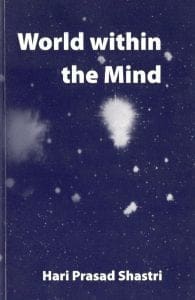Understanding That Thou Art
‘That Thou Art’, in Sanskrit, Tat Twam Asi, is an expression found in the teachings of non duality. One of the key practices in the traditional schools of non duality is to reflect deeply on statements from an enlightened source indicating the ultimate identity in essence of the individual self with the universal Self. This…
Read MoreTriumph of a Hero
The Triumph of a Hero is composed in the style of the traditional classics on non-duality, in verse, by one who knew the Supreme reality as Self. It was written in 205 verses of rhythmic, rhyming Sanskrit with extreme precision and profundity. Here it has been translated as far as possible into English, by Hari…
Read MoreMethod of the Vedanta
The Method of the Vedanta is a history of the non-dual philosophical tradition, written in Sanskrit by Swami Satchidanandendra (1880-1975), translated into English by A J Alston. This is a detailed historical study which finds that after the Advaita philosophy was formulated by Shankara and his direct pupil Sureshvara, various schools emerged with differing methods…
Read MoreVairagya: Non-attachment
Whether one belongs to a Christian school of thought, or to a Buddhist, or a Sufi one, or to this school of Adhyatma Yoga, one finds that great emphasis is always laid on the necessity for cultivating non-attachment to success and failure, and the like, and renunciation of the pleasures of the senses. In The…
Read MoreRight Discrimination on the Path of Light
At a basic level, discrimination means that we have accepted the goal of liberation as our own, and that we are prepared to evaluate experiences according to the criterion: ‘Is it helpful to my path towards my goal? Will it take me a step forward, or throw me back?’ Once we get a feeling for…
Read MoreSelf-Examination on the Path of Light
One step towards this higher self-awareness is the practice of self-examination. Setting aside a few minutes for self-examination, we place our mind before us, so to say, and take a detached look at its condition. We remember our highest purpose: progress towards enlightenment. We then review the day’s actions, reactions and thoughts, in the light…
Read MoreAction as an Offering to Me
One expression used in the Gita is ‘Be My-minded’. This means that the mental energies, which before were spread over a hundred diverse interests, are now preoccupied with the quest for divine knowledge. By using the word ‘My-’ in this way, the Gita links the idea of God with the idea of Self. The quest…
Read MoreWorld within the Mind
The World within the Mind presents us with teachings on non-duality and the way to realization, in the form of discourses given by a traditional teacher, the sage Vasishta, to his pupil, the righteous Prince Rama. These are extracts from a vast Sanskrit classic, composed probably in the first millenium CE, attributed to Valmiki, the…
Read MoreVerses from the Upanishads
These Verses from the Upanishads have been selected for their particular interest and teaching value to those looking for knowledge of the true Self through meditation and the related practices. They have been translated from the original Sanskrit into English, with a full commentary, by Hari Prasad Shastri who had confirmed the highest teachings of…
Read MoreVedanta Light
Vedanta Light is a short book containing answers to questions that arise in the mind of a sincere enquirer setting out on the course of inner discovery. The questions raised and answered are: What is man and what is God? What is the world and what is man’s mission here? Do you teach absolute renunciation?…
Read More









